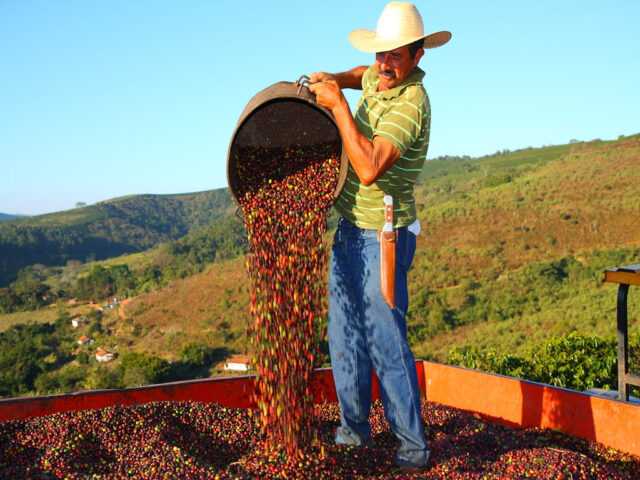SAO PAULO, Brazil — Arabica coffee prices rose sharply in the Brazilian market in November, surpassing 500 BRL/60-kilo bag reports the Center for Advanced Studies on Applied Economics (CEPEA). On Nov. 29, the CEPEA/ESALQ Index for arabica coffee type 6 (delivered in São Paulo) closed at 510.02 BRL/bag (120.43 USD/bag), a staggering 17.9% up compared to that on Oct. 31.
The average Index in November, at 475.13 BRL (114.50 USD) per 60-kilo bag, was 12.7% higher than that from October and 2.9% higher than that from November/18, in real terms (values were deflated by the IGP-DI from Oct/19). The boost came from both the firm demand in the Brazilian market and the international valuation for this variety, mainly due to technical movements.
Concerns about the supply of arabica coffee also influenced price rises
Besides the lower production in Brazil in the 2019/20 season (negative biennial cycle), the percentage of the 2020/21 crop already traded is higher, since, with the sharp price rises in November, more deals were closed in both the spot and the future markets.
Robusta
Robusta coffee prices increased in Brazil too, also reflecting the firm demand in Brazil and international valuations for this variety – which, in turn, came along with the price rises for arabica coffee. On Nov. 29, the CEPEA/ESALQ Index for the robusta type 6, screen 13, Espírito Santo State, closed at 314.21 BRL/60-kilo bag (74.19 USD/bag), 8.4% up compared to that on Oct. 31.
Agents are focused on the harvesting of the 2019/20 crop in Vietnam, which is starting to step up. Robusta production in Vietnam should total 30.4 million bags, according to data from the USDA released in June/19, similar to the volume harvested in the previous crop (2018/19).
2020/21 Crop
In November, high rains were again observed in the arabica and robusta producing regions from Brazil. In this scenario, agents reported that crops are recovering, and a good productive potential is expected for 2020/21. It is worth to mention that most Cepea collaborators believe that the output from next season may not surpass that from 2018/19, which was a record.
In this case, agents are based on the drier weather observed until early October and on the lower crop management in the first months of crops development (since prices were lower), which caused some flowers and fruitlets to drop down. More accurate estimates on the output may be released after the beans-filling stage, which should happen in December.


















